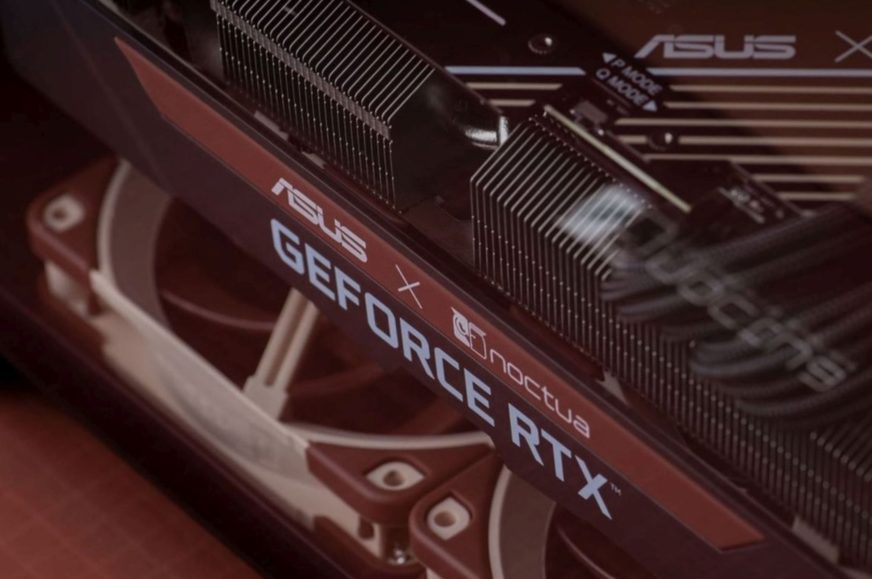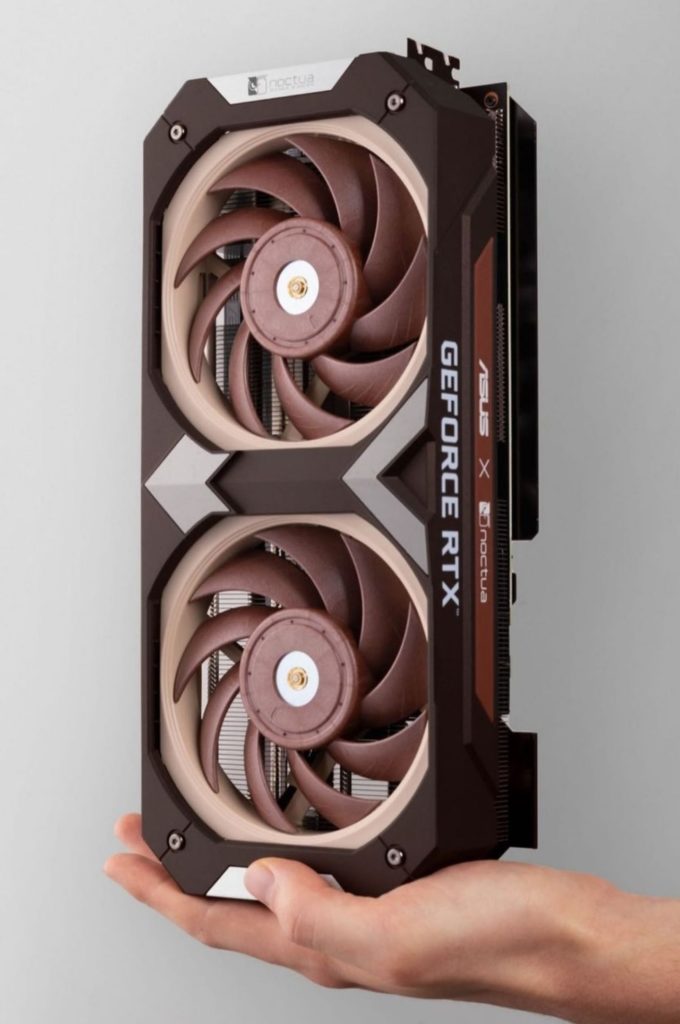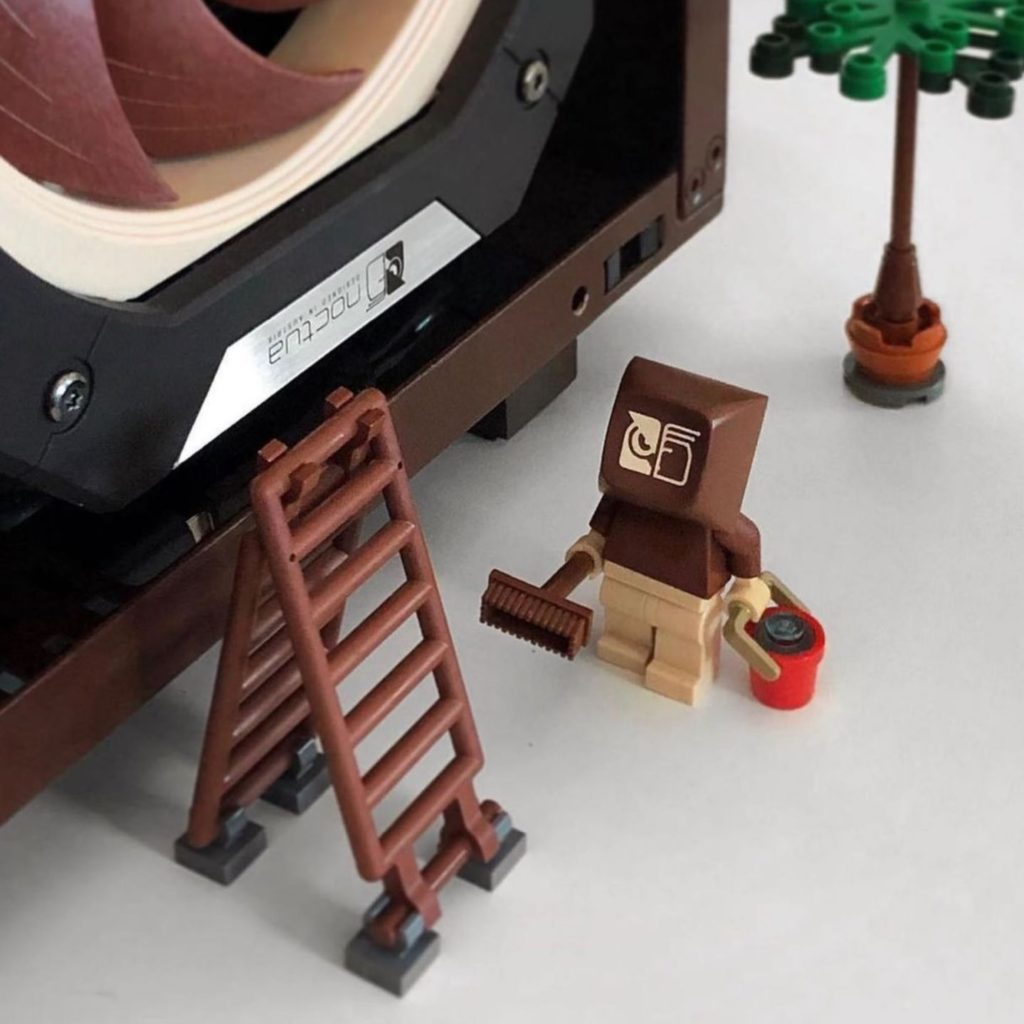Asus GeForce RTX 40x0 Noctua
Asus graphics cards with Noctua coolers wasn’t just a one-season affair. On the contrary, it seems that this could be a tradition that will now continue in the Ada Lovelace GPU generation. Information is extremely scarce so far, but we did hear something from the ones in charge and some details are clear. However, we can only speculate about most of it until CES 2023, where the official unveiling of these graphics will take place.
The collaboration on the production of graphics cards between Asus and Noctua started last year. First, non-reference RTX 3070 models came out of it (RTX3070-8G-Noctua and RTX3070-O8G-Noctua) and later a more powerful 3080 as well (RTX3080-O10g-Noctua). And these graphics cards will be followed up now. However, it is unclear what models these will be. With a probability bordering on certainty it will be the RTX 4080, and there are also rumors in the backrooms about the RTX 4090, which will be a much bigger challenge for developers.
After the RTX 3080, with the more efficient, lower-power RTX 4080, developers probably won’t break a sweat, but it doesn’t look like Noctua plans to stagnate either. While visually the cooler will be very similar, there will be a more significant redesign of the heatsink, which brings a promise of higher efficiency (higher cooling power per unit of noise). We also asked about coils, which are the weakest point. The cooler can be as quiet as it wants, but when it’s overridden by coil whine, it kind of ruins the overall impression, especially with high-end non-reference models like the MSI RTX 4080 16GB Suprim X, where the coils make more intense noise than the fans. This is something Noctua will want to avoid, and they have stressed in communication to us that they take acoustic things around coils extremely seriously. They probably won’t be noiseless (that’s our input already), but the quietest operation compared to other models can be considered a success.
Visualizations of these graphics cards still do not exist, and the images in our article (as well as in other materials) are from the RTX 3070/3080, so they are only illustrative. The fans used will likely be again the “sterrox” NF-A12x25 and we can even confirm their beige-brown variant.Noctua will not reach for the chromax.black this time either. For some potential buyers this will be discouraging, but keeping the traditional color scheme is probably stronger marketing-wise, although it is natural that a large part of users see it differently and consider it more important to be able to visually match the graphics card with other components. That this will be quite complicated for RTX 40×0 “Noctua edition” graphics cards as well is already practically certain.
The thing that there is a pretty big question mark hanging over is what kind of cooler will be on the eventual RTX 4090. The increase in power draw over the RTX 3080 is already significant here, and if the plan is to keep the card running at a similar noise level under maximum load, you can’t do without a significantly larger cooler. Stretching in each axis will have a negative impact on compatibility, but we can imagine the cooler would grow in length. The fans used would not be two 120mm fans, but up to three with which these would be the longest graphics cards ever made. So the dimension in length would be similar to the 360mm liquid cooler radiators, just under 400mm. But that’s just our speculation, which may have nothing in common with Noctua’s intentions, and the RTX 4090 will also be “dual-fan” and adequately noisier to the higher power draw.
Only CES in January will shed more light on the design of GeForce RTX 4000 graphics cards with Noctua coolers, after which we will definitely return to this topic. And this time, maybe already in tests. So that you know exactly how much more attractive these graphics cards are compared to the top models of other brands.
English translation and edit by Jozef Dudáš
- Contents
- Asus GeForce RTX 40x0 Noctua













